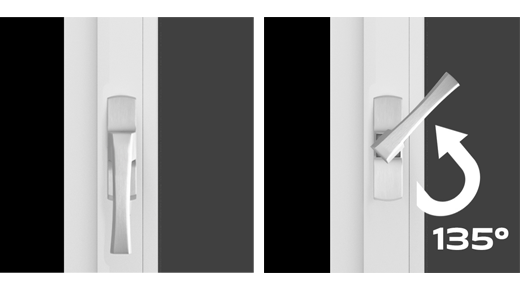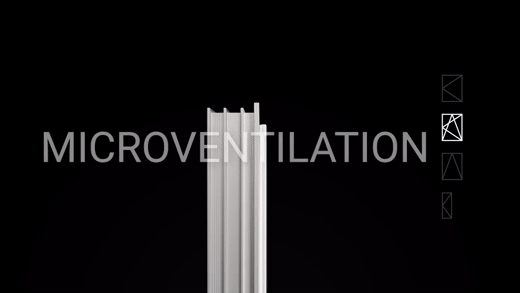Micro-ventilation devices certified UNE-EN 12207:2017
Giesse microventilation for sash, tilt-and-turn and sliding windows

Building ventilation brings fresh air to interiors, ensuring healthy and enjoyable living and working conditions for both residential and commercial environments. By replacing stale air with fresher air from outside, it is possible to regulate internal temperatures and humidity.
The Covid-19 pandemic also highlighted how building ventilation is one of the recommended solutions to counter health and safety risks. Indeed, even in the case of common viruses such as influenza, airborne transmission is particularly effective in crowded and confined indoor spaces where ventilation is poor or absent. Thus, workplaces such as offices, schools and hospitals are cyclically at risk, for example during the winter months.
Future buildings are going to take into consideration these emerging issues. New regulations will definitely factor in as well, depending on the country (check the WHO building ventilation roadmap). But when it comes to existing buildings renovations there is a different set of challenges. Installing a brand new mechanical ventilation system in a building is a long and expensive task not everyone can afford.
The Giesse solution for natural ventilation
Since 2010 Giesse includes a special “Micro-ventilation setting” as standard in all tilt-and-turn window kits, and an optional one on sash kits and Champion Plus sliding multipoint system. By turning the handle to the microventilation position the sash opens by a few millimeters only, allowing for a constant air flow. This minimizes condensation and assures fresh air supply for the interiors, without compromising the temperature in the room.


Certified micro-ventilation device
In line with its commitment to offer solutions that comply with current regulations, or even anticipate them, Giesse has decided to certify its micro-ventilation devices according to the UNE-EN 1026:2017 standard in the LGAI Technological Centre (APPLUS) Windows and doors laboratory in Spain.
In fact, while in most countries there is still no specific regulation on the subject, the ‘Documento Basico HS de Salubridad’ (14 June 2022) is to date the most advanced standard in Europe for ventilation. The Basic Document DBHS of the Technical Building Code, section HS 3 ‘Indoor Air Quality’, prescribes that buildings must have windows with openings that allow air permeability, according to UNE-EN 12207:2017, class 1 or higher.
Giesse side–hung and tilt and turn kits, as well as the Champion Plus sliding system have a micro-ventilation device that guarantees air passage in compliance with Class 1 of the DBHS standard, following air permeability tests according to UNE-EN 1026:2017. The results obtained are certified according to classification standard UNE-EN 12207:2017.
Check out the documentation
The constant natural air flow provided by Giesse micro-ventilation system includes several benefits:
- Existing windows can be retrofitted and upgraded, without the need to replace the entire window.
- It is easier to install and cheaper than mechanical ventilation, which needs electrical energy and constant maintenance (eg. changing filters) as well as extensive renovation work.
- Easy to use: it doesn’t require any specific technical knowledge to be handled.
- As standard in all tilt-and-turn window kits. Available as optional for side-hung windows.
- Adjustable during installation to ensure a constant flow of air as the size of the frame and the room changes.
